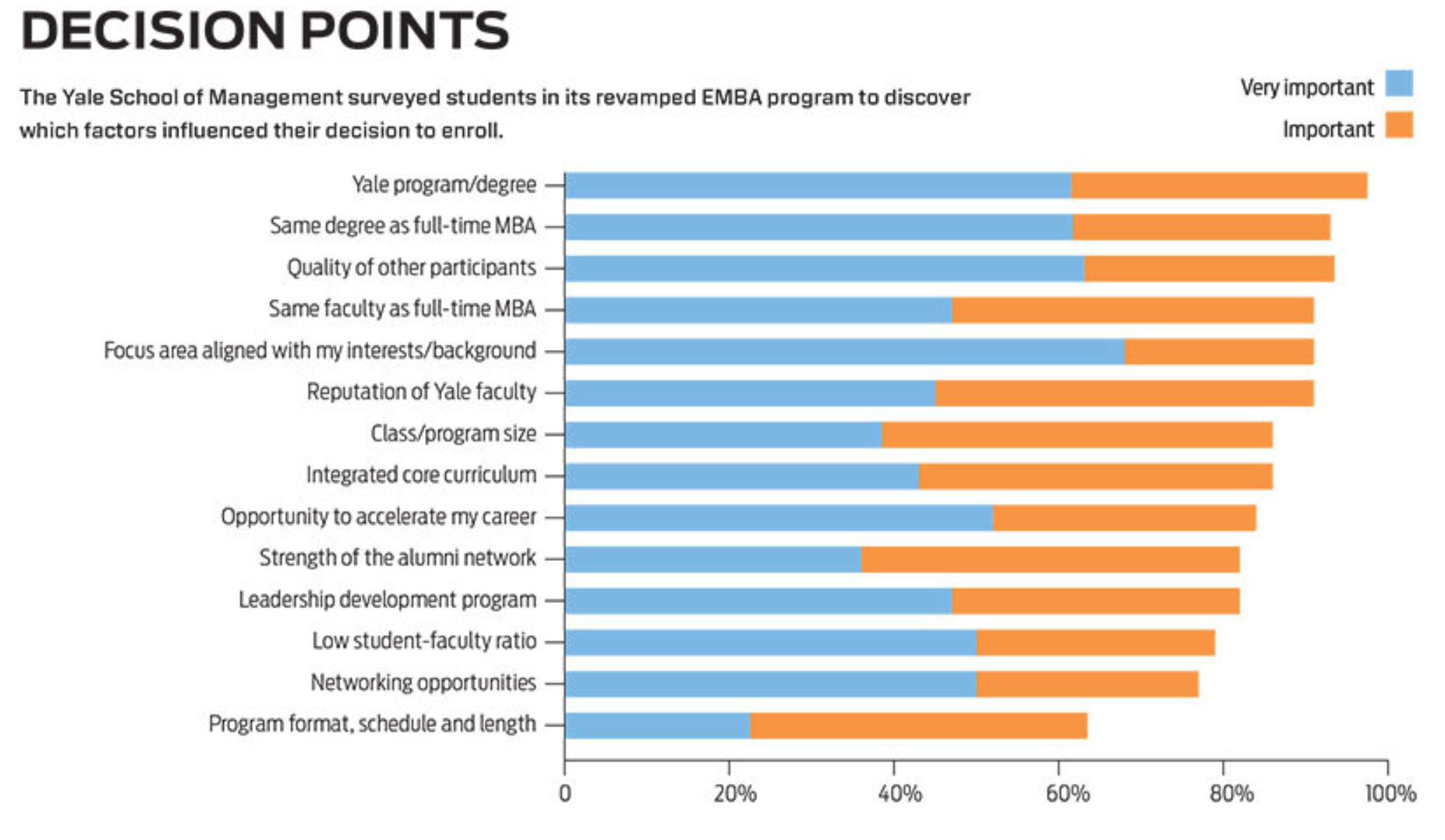
Yale School of Management in New Haven, Ct.
When The Economist first began ranking Executive MBA programs in 2013, Yale University’s School of Management was barely in the game. The school had a narrowly focused program for healthcare professionals that would graduate just 14 students in 2013. Yale’s modest offering barely covered its direct costs, causing on professor to joke that the school ran it for charity.
Yet, this week Yale SOM scored yet another rankings victory, topping The Economist’s third list of the world’s best executive MBA offerings. SOM climbed nine places from the magazine’s previous ranking in 2015, leapfrogging top rivals who have been in the EMBA business decades longer than Yale and boast programs that enroll as many as four times the students as SOM.
Still, Yale’s MBA for Executives program zoomed past Chicago Booth, the school that invented the executive format of the MBA in 1943, Northwestern Kellogg, which first entered the market in 1976 and boasts a global parntership network second to none, and Columbia Business School, which has an annual intake of 145 students, more than double Yale’s latest class of 67 incoming students.
CHOOSING A STRATEGY CONSISTENT WITH THE SCHOOL’S STRATEGY & STRENGTHS
How did Yale do it? By making several conscious decisions on how to grow the program without sacrificing its rigor, the teaching commitment of star faculty, or its admission standards. After a strategic review of the program in 2012, Yale settled on something more conservative than the times might have called for, but something that fit with the school’s strategy and strengths.
When David Bach was hired from IE Business School to join the school’s new leadership team headed by former Chicago Booth Dean Edward Snyder in 2012, he turned his attention to the program that first began in 2005 as a collaboration between Yale’s School of Medicine and its School of Management. The program attracted extraordinary students, doctors, surgeons, nurses, pharma executives and health IT professionals.
“It was a very nichey program,” recalls Bach, deputy dean. “It was the pet project of a small group of faculty and didn’t feature prominently in the strategy of the school.”
‘DO WE GET RID OF THIS HEALTHCARE FOCUS?’
But that early enthusiastic group made some early decisions that were critical. The EMBA program featured the same integrated core curriculum offered in the full-time MBA program, the same faculty who taught in the full-time offering, and the same rigorous admissions standards. In fact, the school required the taking of the GMAT even though it’s full-time program provided the option of taking the GRE.
“We turned out really strong students but only averaged 21 students per year,” adds Bach. “But the questions were, ‘Do we get rid of this healthcare focus to make it more of a mainstream EMBA program? Do we move it out of New Haven or make it more modular where you don’t have to come here every other weekend?’”
One certainty emerged during the review: No one—not students, faculty, staff, alumni, or the school’s board of advisors—wanted to offer an MBA-lite program, cutting back on contact hours or in-person sessions. The 22-month program started in July so it would culminate with the university-wide graduation ceremony in May. It was delivered on the Yale campus in New Haven, Connecticut, first with a two-week residency, then on alternating weekends. Yale could possibly broaden the appeal of the program by locating it in New York, or at least reducing the time students had to spend in New Haven. It could rely more on technology, flip the classroom, or build in synchronous online elements.
WHAT YALE’S EXECUTIVE STUDENTS MOST LIKED ABOUT THE PROGRAM
A student survey identified what paying customers considered important in choosing Yale for their EMBA when they could just as easily have gone to Wharton, Columbia, NYU Stern, or Cornell. The six most important attributes all informed the thinking of the review. First and foremost, EMBA students chose the school for its Yale imprimatur, the fact that the degreee was the same as the full-time MBA, the quality of their classmates, the fact that EMBA program shared the same faculty who taught in the full-time offering, and that the focus area aligned with students’ interests and backgrounds (see below).

Survey of students in Yale’s MBA for Executives program
“We ultimately decided the formula we had was a good one but doing it in healthcare alone was not enough,” says Bach. The school added two new focus areas in sustainability and asset management, fields that allowed it to leverage Yale’s School of Forestry & Environmental Studies and the university’s stellar record on managing its formidable endowment. “We decided that rather than owning one niche, we wanted to own three niches that are consistent with our management, our strategy and our resources.”





Questions about this article? Email us or leave a comment below.